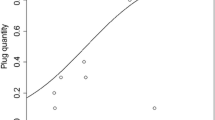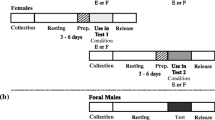Abstract
In the female grasshopper Gomphocerus rufus mating replaces copulatory readiness with immediate and long-lasting `secondary defense', during which further mating attempts are efficiently repelled. The behavioral change is caused by secretions from the male accessory glands' white secretory tubule 1 which is injected with the spermatophore material into the female's spermathecal duct. A bristle field of contact chemoreceptors at the entry of the spermathecal duct into the endbulb is assumed to be stimulated by the secretion. Ablation of the bristle field, interruption of the nervous pathway between the spermatheca and the ventral nervecord, or severance of the latter sustains sexual receptivity after mating. Both the secretion from white secretary tubule 1 and the spermatophore contained in the spermatheca of a mated female are digested by proteolytic enzymes from spermathecal gland cells. Dissolved material is resorbed by similar glandular-like cells. The intersexual conflicts of interest and their evolutionary consequences are discussed.
Similar content being viewed by others
Author information
Authors and Affiliations
Additional information
Accepted: 4 December 1998
Rights and permissions
About this article
Cite this article
Hartmann, R., Loher, W. Post-mating effects in the grasshopper, Gomphocerus rufus L. mediated by the spermatheca. J Comp Physiol A 184, 325–332 (1999). https://doi.org/10.1007/s003590050330
Issue Date:
DOI: https://doi.org/10.1007/s003590050330




